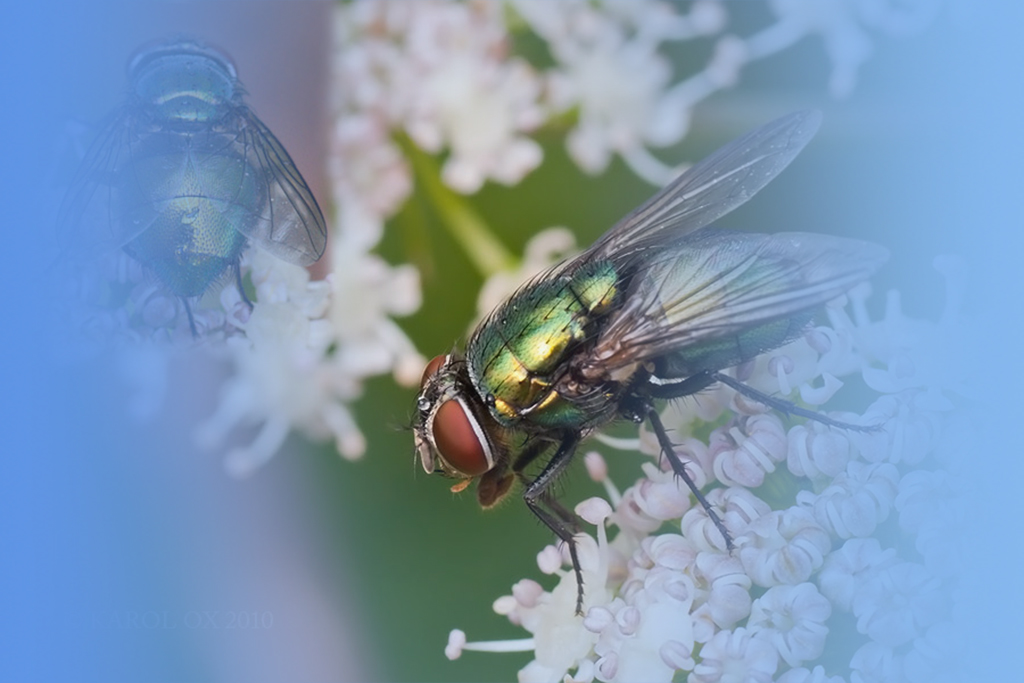[1] Borkent A, Dominiak P. Catalog of the biting midges of the world (Diptera:Ceratopogonidae)[J]. Zootaxa, 2020, 4787(1):15. DOI:10.11646/zootaxa.4787.1.1.
[2] Li CQ, Bellis G, Wu XX, et al. A new species of Nilobezzia Kieffer (Diptera, Ceratopogonidae) from the mangrove forest of Hainan Island, China[J]. ZooKeys, 2019, 893:135-141. DOI:10.3897/zookeys.893.39032.
[3] Yu YX. Ceratopogonidae of China (Insecta:Diptera)[M]. Beijing:Military Medical Science Press, 2006:1504-1512. (in Chinese) 虞以新. 中国蠓科昆虫(昆虫纲 双翅目)[M]. 北京:军事医学科学出版社, 2006:1504-1512.
[4] Borkent A. The pupae of the biting midges of the world (Diptera:Ceratopogonidae), with a generic key and analysis of the phylogenetic relationships between genera[J]. Zootaxa, 2014, 3879(1):89. DOI:10.11646/zootaxa.3879.1.1.
[5] Giłka W. Obserwacje behawioru niektórych kuczmanów i ochotkowatych (Diptera:Ceratopogonidae, Chironomidae)[J]. Acta Entomol Silesiana, 2003, 9-10:31-33.
[6] Downes JA. Feeding and mating in the insectivorous Ceratopogoninae (Diptera)[J]. Mem Entomol Soc Can, 1978, 110(S104):38. DOI:10.4039/entm110104fv.
[7] Wu XX, Yang H, Meng XR, et al. A new species and a newly recorded species of the genus Alluaudomyia (Insecta:Diptera:Ceratopogonidae) from China[J]. J Environ Entomol, 2022, 44(4):1043-1052. DOI:10.3969/j.issn.1674-0858.2022.04.30.(in Chinese) 吴小香, 杨浩, 孟祥瑞, 等. 阿蠓属-新种及-中国新记录种(昆虫纲:双翅目:蠓科)[J]. 环境昆虫学报, 2022, 44(4):1043-1052. DOI:10.3969/j.issn.1674-0858.2022.04.30.
[8] Wirth WW, Grogan WL. The predaceous midges of the world (Diptera:Ceratopogonidae;tribe Ceratopogonini), flora and fauna handbook 4[M]. Leiden:Brill, 1988:ix-x.
[9] Wirth WW, Ratanaworabhan NC. New species and records of predaceous midges (Diptera:Ceratopogonidae) from rice paddies in Thailand[J]. Pac Insect, 1981, 23(3/4):396-431.
[10] Debenham ML. A revision of the Australian and New Guinea predatory Ceratopogonidae (Diptera:Nematocera) of the tribes Heteromyiini and Sphaeromiini[J]. Aust J Zool, 1974, 22(S28):1-3. DOI:10.1071/AJZS028.
[11] Borkent A. Ceratopogonidae[C]//Kir-Spriggs AH, Sinclair BJ. Mannual of afrotropical Diptera. volume2. Nematocera and lower Brachycera:Suricata 5. Pretoria:South African National Biodiversity Institute, 2017:733-812.
[12] Folmer O, Black M, Hoeh W, et al. DNA primers for amplification of mitochondrial cytochrome c oxidase subunit Ⅰ from diverse metazoan invertebrates[J]. Mol Mar Biol Biotechnol, 1994, 3(5):294-299.
[13] Kumar S, Stecher G, Li M, et al. MEGA X:Molecular evolutionary genetics analysis across computing platforms[J]. Mol Biol Evol, 2018, 35(6):1547-1549. DOI:10.1093/molbev/msy096.
[14] Wirth WW, Giles FE. New species and records of predaceous midges from Fiji (Diptera:Ceratopogonidae)[J]. Proc Entomol Soc Wash, 1990, 92(3):444-460.
[15] Wirth WW. A reclassification of the Palpomyia-Bezzia-Macropeza groups, and a revision of the North American Sphaeromiini (Diptera, Ceratopogonidae)[J]. Ann Entomol Soc Am, 1962, 55(3):272-287. DOI:10.1093/aesa/55.3.272.
[16] Wirth WW. The Heleidae of California[J]. Univ Calif Publ Entomol, 1952, 9(2):95-266.
[17] Ingram A, Macfie JWS. West African Ceratopogoninae[J]. Ann Trop Med Parasitol, 1921, 15(4):313-376. DOI:10.1080/00034983.1921.11684277.
[18] de Meillon B, Hardy F. New records and species of biting insects from the Ethiopian Region. V[J]. J Entomol Soc South Afr, 1954, 17(1):62-85.
[19] He ZH, Li JH, Lin XD. Discovery and description of male Atrichopogon palmatus based on DNA barcodes[J]. J Trop Biol, 2024, 15(1):94-99. DOI:10.15886/j.cnki.rdswxb.20230012.(in Chinese) 何泽华, 李加慧, 林晓丹. 基于DNA条形码的棕榈裸蠓雄虫的发现与描述[J]. 热带生物学报, 2024, 15(1):94-99. DOI:10.15886/j.cnki.rdswxb.20230012. |



